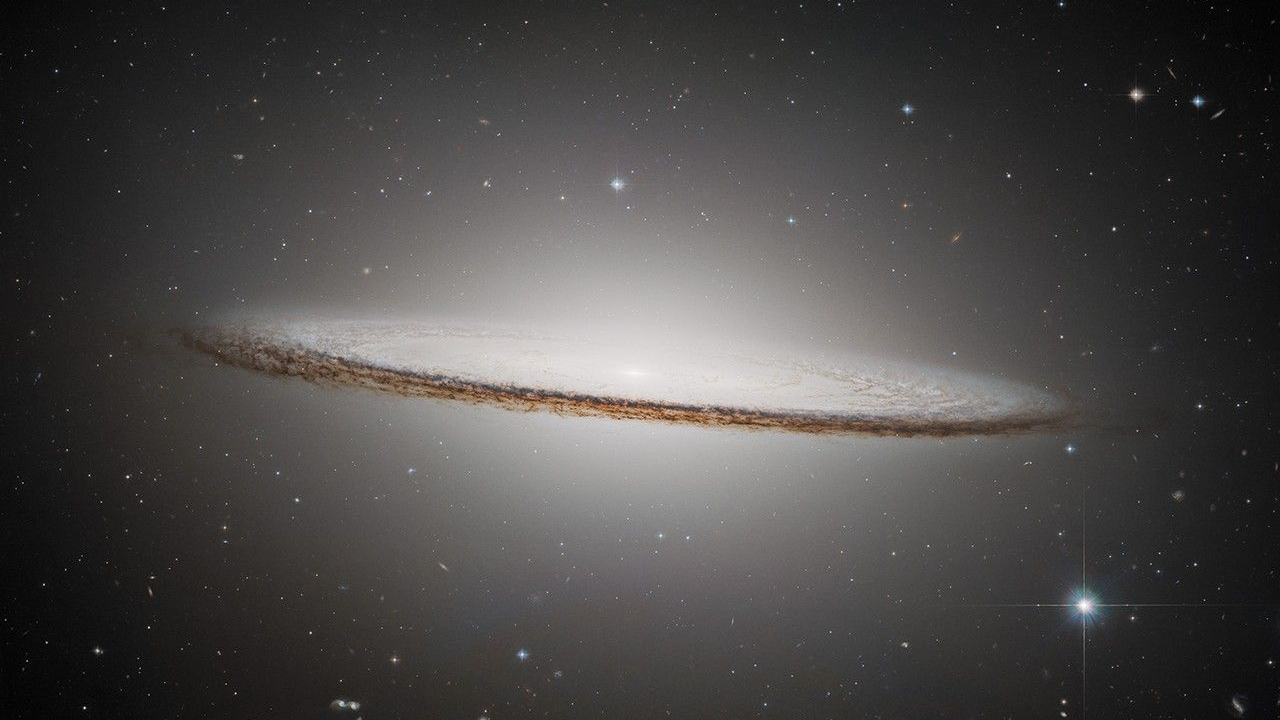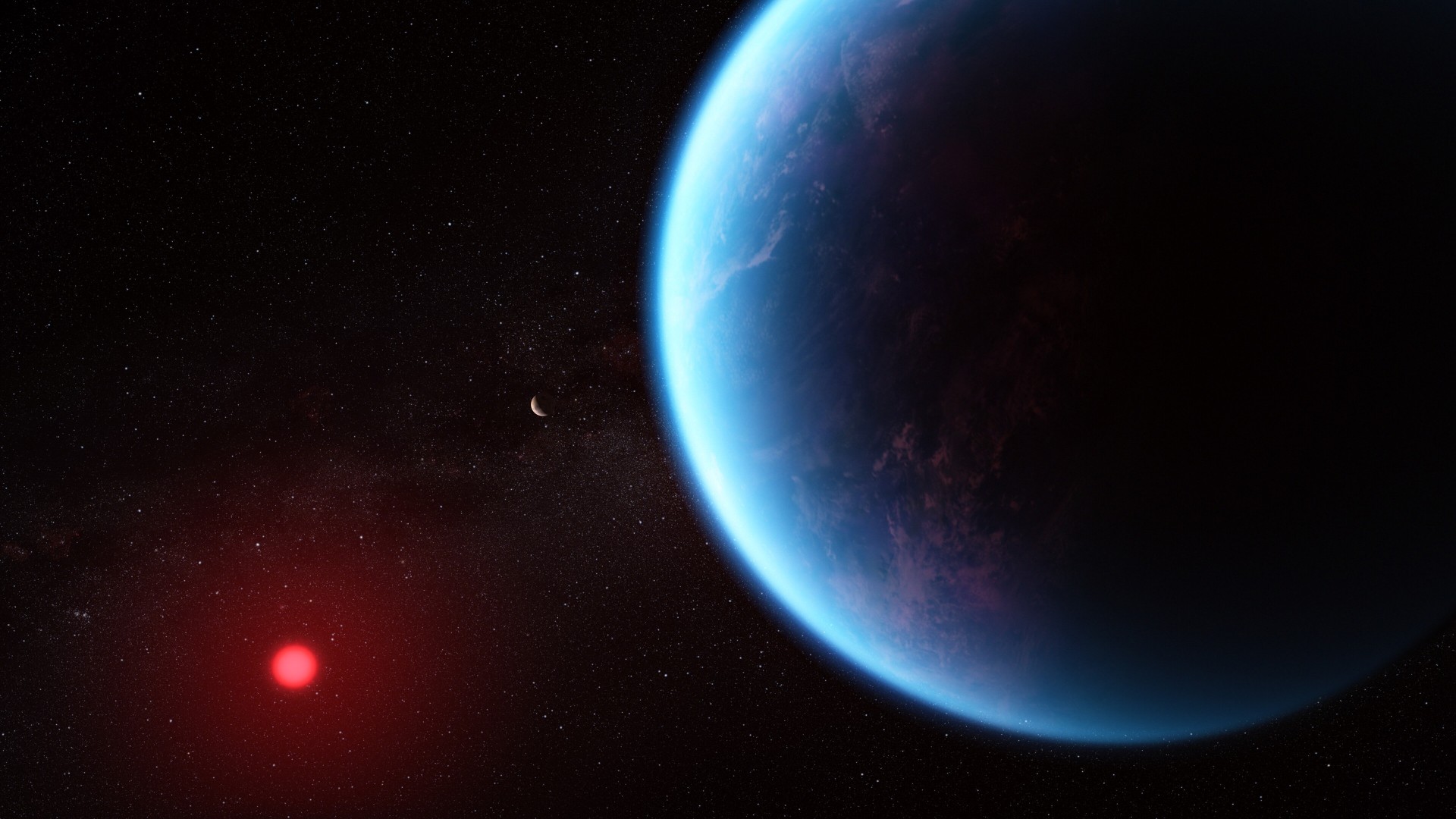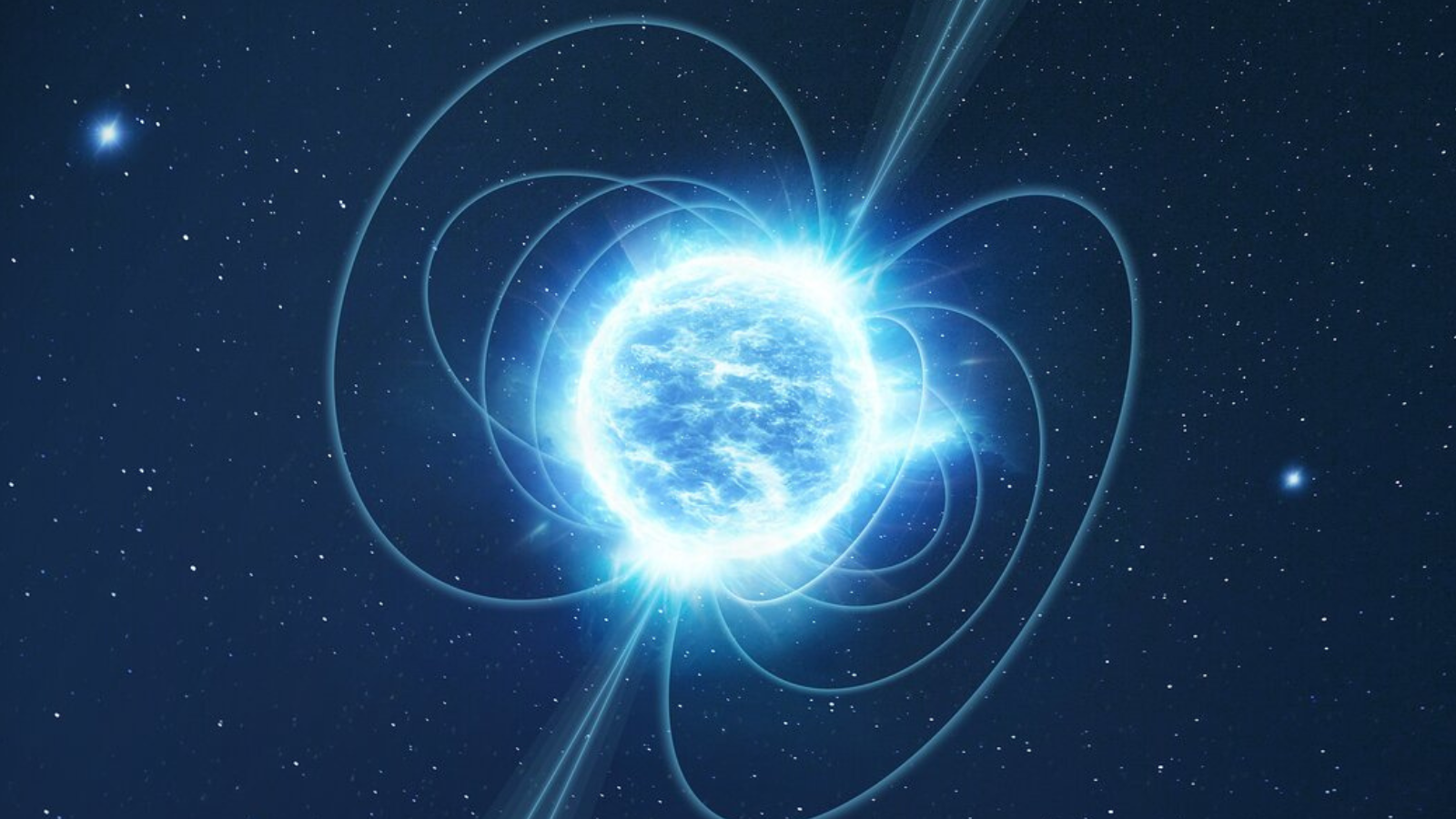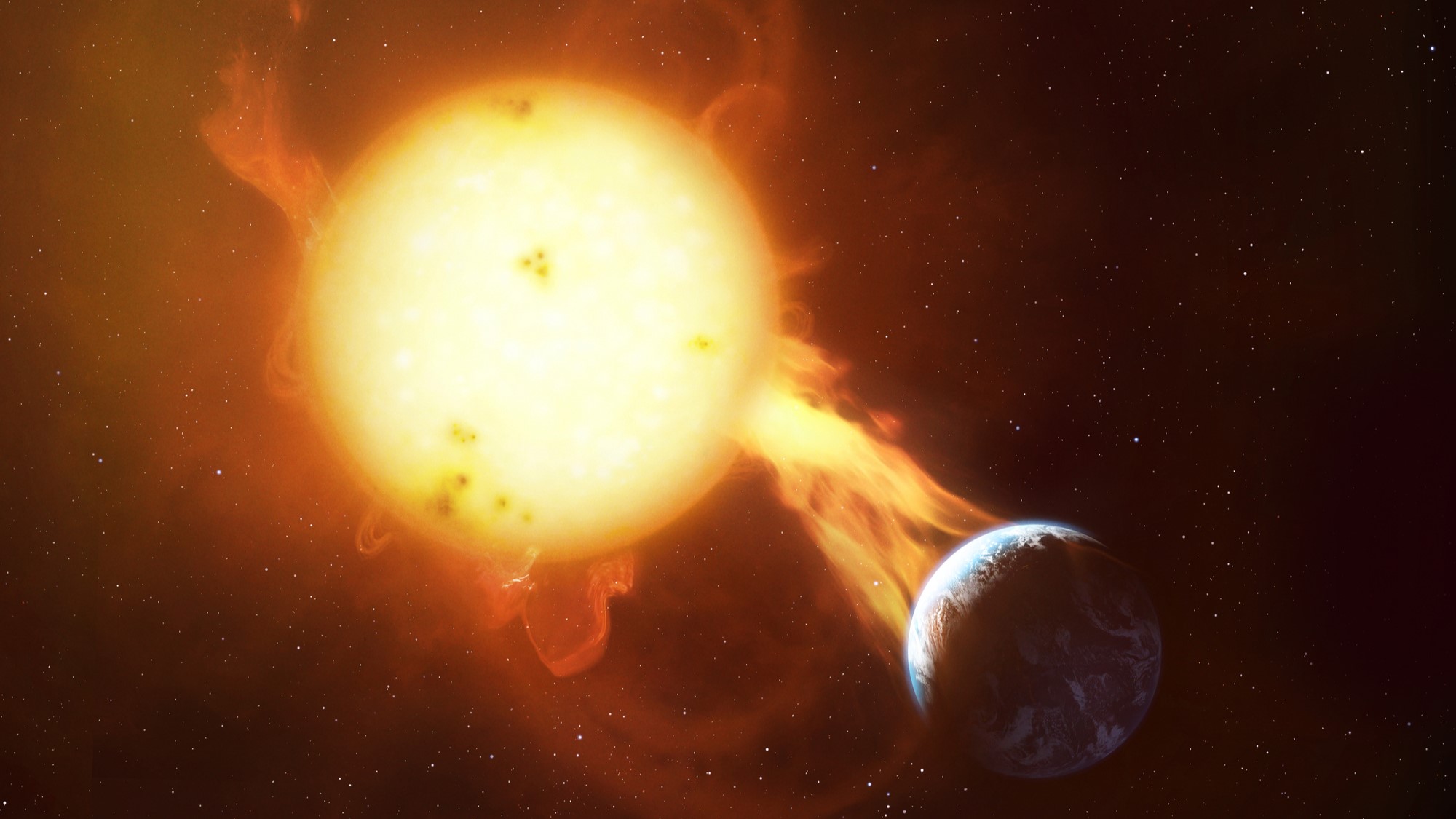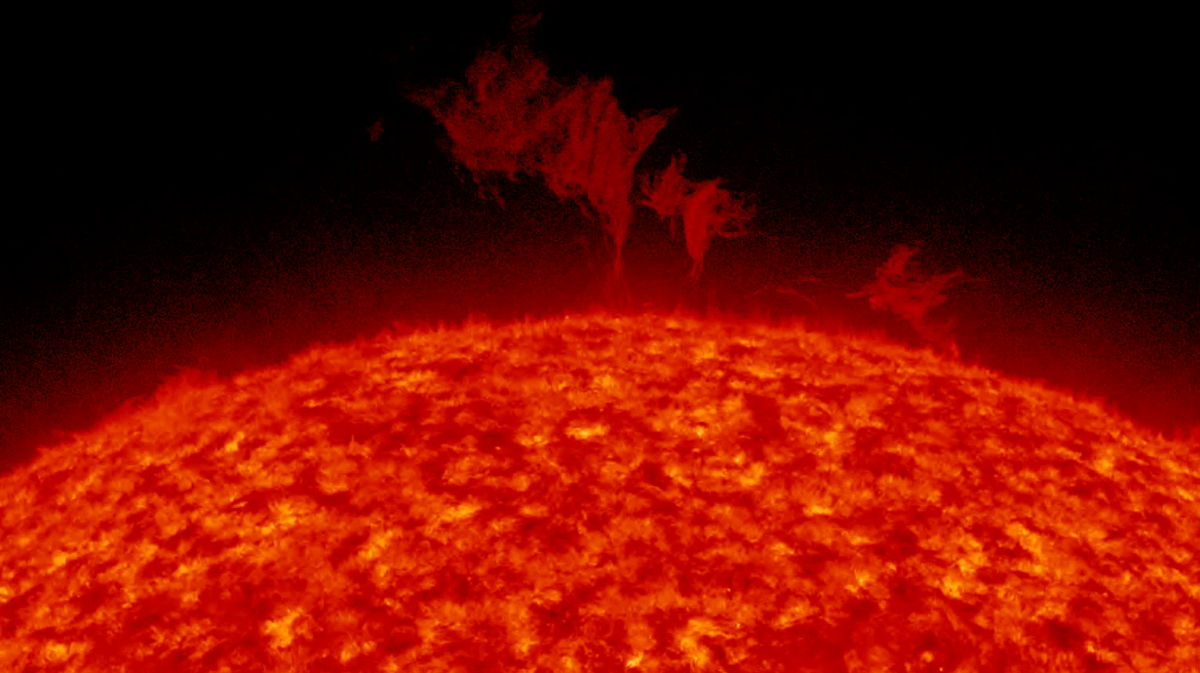Einstein wins again! Quarks obey relativity laws, Large Hadron Collider finds
Top quarks follow the rules of special relativity day and night.
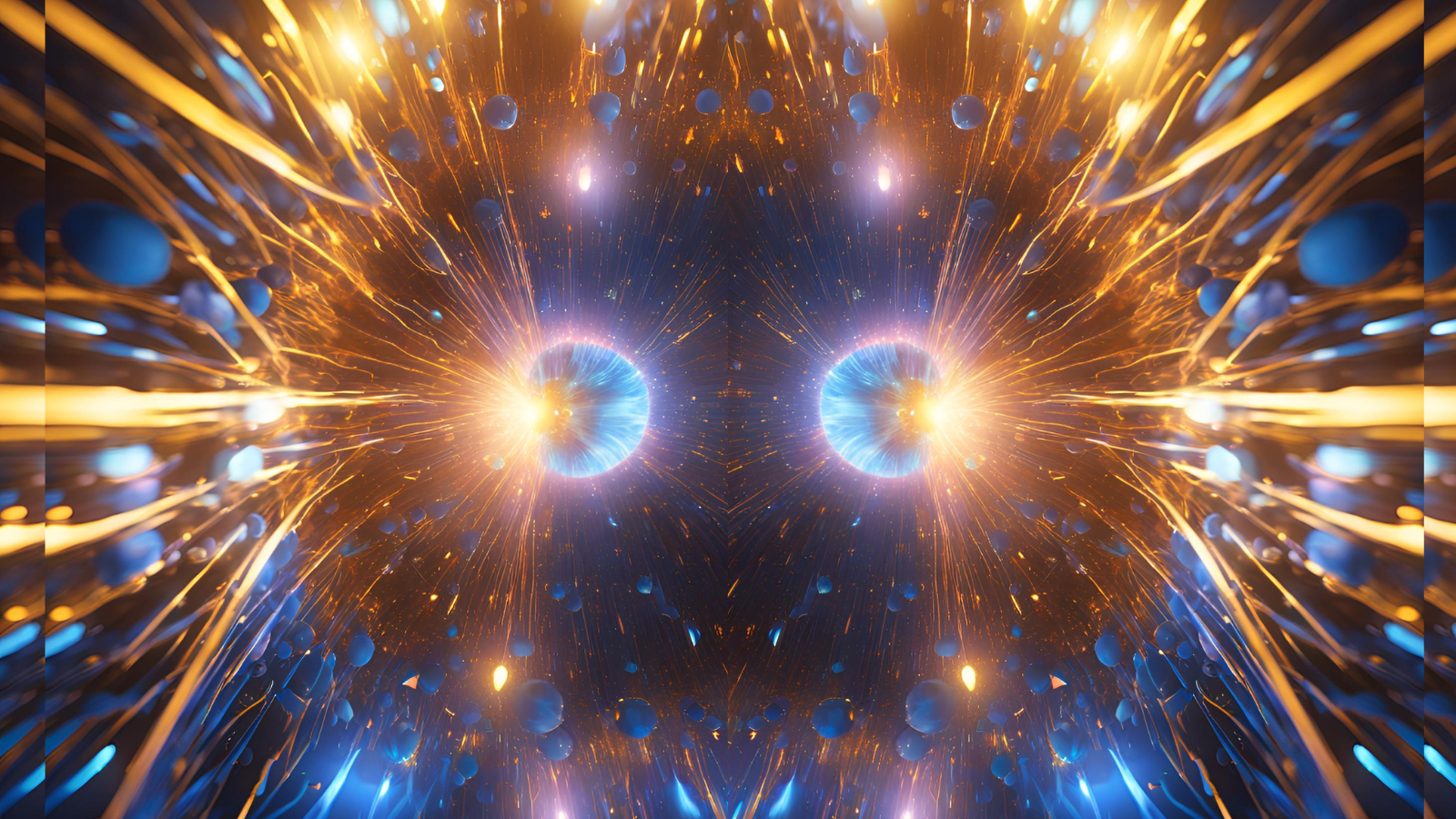
Is there a time of day or night at which nature's heaviest elementary particle stops obeying Einstein's rules? The answer to that question, as bizarre as it seems, could tell scientists something very important about the laws of physics governing the cosmos.
In a first-of-its-kind experiment conducted at the world's most powerful particle accelerator, the Large Hadron Collider (LHC), scientists have attempted to discover if the universe's heaviest elementary particle — a particle not composed of other smaller particles — always obeys Einstein's 1905 theory of special relativity.
More specifically, the team operating the LHC's Compact Muon Solenoid (CMS) detector wanted to know if one of the rules upon which special relativity is built, called "Lorentz symmetry," always holds for top quarks.
Lorentz symmetry states that the laws of physics should be the same for all observers who aren't accelerating. That means that the results of an experiment should be independent of the orientation of the experiment, or the speed at which it runs.
However, some theories suggest that, at extremely high energies, special relativity fails as a result of Lorentz violation or Lorentz symmetry breaking.
The laws of physics could therefore differ for observers in different frames of reference. That would mean that experimental observations would depend on the orientation of the experiment in space-time (the four-dimensional unification of space and time). That would result in a shakeup in many of our best theories of the cosmos, including the standard model of particle physics, which is founded on special relativity.
"Remnants of such Lorentz symmetry breaking could be observable at lower energies, such as at the energies of the LHC, but despite previous efforts, they have not been found at the LHC or other colliders," the CMS collaboration wrote in a statement.
The CMS team set about searching for such remnants of Lorentz symmetry breaking using pairs of nature's heaviest elementary particle, the top quark.
Get the Space.com Newsletter
Breaking space news, the latest updates on rocket launches, skywatching events and more!
Quark around the clock!
Quarks are the particles in the standard model of particle physics that bind together and comprise particles like protons and neutrons.
There are six "flavors" of quark with increasing masses: up, down (found in protons and neutrons), charm, strange, top, and bottom. The heaviest of these is the top quark, possessing around the same mass as a gold atom (about 173 giga-electronvolts).
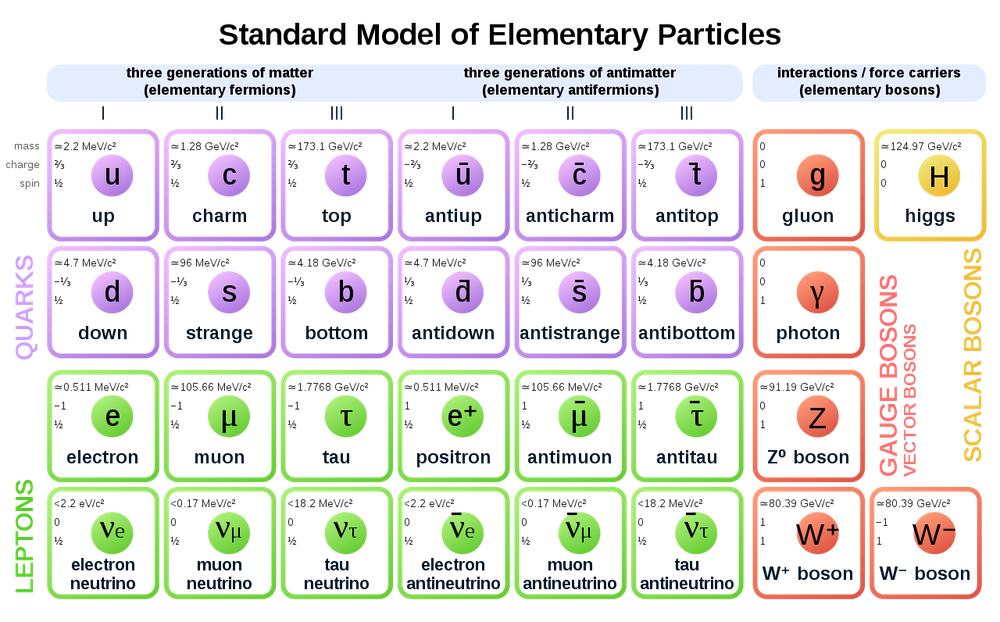
The CMS researchers reasoned that, if the collisions between protons accelerated to near-light-speeds in the LHC depend on orientation, then the rate at which top-quark pairs produced by such events should vary with time.
That is because, as Earth rotates, the direction of the proton beams generated for particle collisions in the powerful particle accelerator changes. Thus, the direction of the top quarks created by such collisions should change, too.
Wildly, that means that the number of quarks created should depend on what time of day the collisions occur!
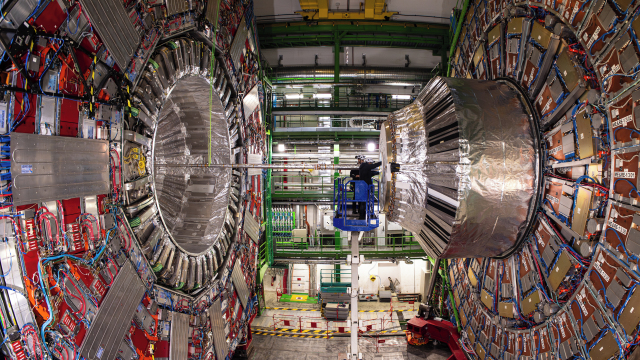
Thus, if there is a preferred direction in space-time and signs of Lorentz symmetry breaking, there should be a deviation from a constant rate of top quark pair production in the LHC dependent on the time of day the experiment is conducted!
Using data from Run 2 of the LHC, which was conducted between 2015 and 2018, the CMS collaboration found no such deviation.
That means that they found no sign of Lorentz symmetry breaking, and thus no evidence of top quarks defying Einstein no matter what way proton beams are orientated (or what time of day collisions occurred).
So, Einstein's theory of relativity is safe around the clock. Well, for now, at least.
The upgraded LHC's third and more powerful operating run began in 2022 and is set to conclude next year. The team will look for signs of Lorentz symmetry breaking in higher-energy proton-proton collisions.
"The results pave the way for future searches for Lorentz symmetry breaking based on top-quark data from the third run of the LHC," the CMS collaboration wrote. "They also open the door to scrutiny of processes involving other heavy particles that can only be investigated at the LHC, such as the Higgs boson and the W and Z bosons."
The team's research was published at the end of 2024 in the journal Physics Letters B.
Join our Space Forums to keep talking space on the latest missions, night sky and more! And if you have a news tip, correction or comment, let us know at: community@space.com.

Robert Lea is a science journalist in the U.K. whose articles have been published in Physics World, New Scientist, Astronomy Magazine, All About Space, Newsweek and ZME Science. He also writes about science communication for Elsevier and the European Journal of Physics. Rob holds a bachelor of science degree in physics and astronomy from the U.K.’s Open University. Follow him on Twitter @sciencef1rst.
-
Unclear Engineer I am still wondering how a quark can be a "fundamental" particle when the combination of 2 down quarks and 1 up quark (a neutron) can become a combination of one down quark and 2 up quarks ( a proton) by emitting an electron, which is also supposed to be a "fundamental" particle that is not composed of quarks at all, and quarks are not supposedly containing electrons.Reply
Typically, I see something like this from https://en.wikipedia.org/wiki/Quark :
"A quark of one flavor can transform into a quark of another flavor only through the weak interaction, one of the four fundamental interactions in particle physics. By absorbing or emitting a W boson, any up-type quark (up, charm, and top quarks) can change into any down-type quark (down, strange, and bottom quarks) and vice versa. This flavor transformation mechanism causes the radioactive process of beta decay, in which a neutron (n) "splits" into a proton (p), an electron (e−) and an electron antineutrino (νe) (see picture). This occurs when one of the down quarks in the neutron (udd) decays into an up quark by emitting a virtual W− boson, transforming the neutron into a proton (uud). The W− boson then decays into an electron and an electron antineutrino."
For me, that indicates something entirely different from "building blocks" when a quantum physicist says "fundamental particle".
-
Robert Lucien Howe The result here is interesting but not really a surprise.. At speeds slower than light Special Relativity passes every test.Reply
Its predictions for physics at speeds faster than light are a very different matter but there is currently still no real way to test that.. -
danR ReplyI am still wondering how a quark can be a "fundamental" particle when the combination of 2 down quarks and 1 up quark (a neutron) can become a combination of one down quark and 2 up quarks ( a proton) by emitting an electron, which is also supposed to be a "fundamental" particle that is not composed of quarks at all, and quarks are not supposedly containing electrons.
For me, that indicates something entirely different from "building blocks" when a quantum physicist says "fundamental particle".
The decay emits the electron, not the quark. Conservation laws require the mass/energy, charge, and whatnot be preserved in Nature's bookkeeping. Nuclear reactions aren't like chemical reactions where, say, hydrogen evolves from zinc and hydrochloric acid.
The electron was never there in the first place. The decay process fashions it out of the inventory of whole cloth, the aforementioned attributes. Search Google Images, "Feynman Diagram" . Eg. electron and positron emitting gamma photon, thence quarks and gluon, none of which were components of the fundamental electron or positron from the outset. -
Unclear Engineer I can read that thought process, but I don't agree with it.Reply
As I said, the concept of "fundamental particle" has devolved into "we don't know how to split this particle with the theories and technology at our disposal right now", and nothing more than that meaning.
If quantum theorists believe that they can get an electron out of "nothing" without getting a positron out of that same "nothing" at the same time, then what is their problem ginning up a solution to the obvious lack of antimatter in our current universe that is consistent with the Big Bang Theory?
Yes, the theory that "explains" beta decay and positron decay and electron capture by nuclei does conserve the parameters currently combined into the Standard Model of quantum mechanics. But, that model also postulates all sorts of things that are just not "explained" in a manner that makes sense to people not confined to that particular box of thought processes. -
notsomuch Reply
Don't think of particles as being like rocks. They are 100% energy. Not solid or any sort of similar way to think about them.Unclear Engineer said:I can read that thought process, but I don't agree with it.
As I said, the concept of "fundamental particle" has devolved into "we don't know how to split this particle with the theories and technology at our disposal right now", and nothing more than that meaning.
If quantum theorists believe that they can get an electron out of "nothing" without getting a positron out of that same "nothing" at the same time, then what is their problem ginning up a solution to the obvious lack of antimatter in our current universe that is consistent with the Big Bang Theory?
Yes, the theory that "explains" beta decay and positron decay and electron capture by nuclei does conserve the parameters currently combined into the Standard Model of quantum mechanics. But, that model also postulates all sorts of things that are just not "explained" in a manner that makes sense to people not confined to that particular box of thought processes. -
Helio As for relativity, I was hoping to see a result to indicate some evidence of length contraction. The only example of it has come from accelerators. A flattened particle, apparently, best explains what’s observed. Otherwise, all the tons of other evidence favors time dilation, AFAIK.Reply
I find it curious that one must choose to use either time dilation or length contraction, but not both, in calculating the time to, say, Proxima Centauri. -
Unclear Engineer How theorists think about "particles" is also part of the issue. We can all agree that when we try to measure subatomic "things", we see properties that look like particles under some conditions and like waves under other conditions. But, we really have not idea how waves can exist without being in some sort of medium that they displace to create forces.Reply
The Michaelson-Morley experiment to detect our motion through such a medium showed that we cannot detect motion through any sort of medium in space through which photons propagate. But, that does not mean that there is no such medium, and the Lorenz transformations of Special Relativity provide a mathematical solution to the observation by making the measurements of time and length dependent on the differences in (constant) speed between observers.
So, the quantum theorists use the concept of "fields" that are everywhere in space all of the time to propose that "particles" are really only energy that vibrates fields in particular ways. And, they have a pantheon of various fields and vibrations to explain what they find with high energy collisions between various "particles".
My only point is that we really don't fully understand what we are talking about. And, further, we have problems with combining that theory with astronomy observations and the General Theory of Relativity, which does quite a good job of matching astronomy observations - except perhaps for the observations of galactic object speeds, which seem to require more matter than we can detect (currently).
The BBT ties to bridge the existing gap between General Relativity and quantum mechanics so as to be able to extrapolate the apparent expansion of the universe backward in time to a single point (or wimps out at the Planck radius). But, we really don't have the answers to fundamental questions such as how those theories can explain the dominance of regular matter over antimatter in the universe today, among other important unexplained problems. Which is why I brought up the issue of beta decay seeming to not fit the idea of certain particles really being "fundamental".
So, there are plenty of people who are not "sold" on the current forms of the Standard Model or the Big Bang Theory. My thinking is that we are probably missing something important, so I support the research to look for things that might answer some of these questions.
What I don't support is the incessant writing of articles that states things "are" what the theories say they think they are. My point is that we need to constantly be aware of the differences between what we actually can demonstrate with observations and what we postulate are the explanations for the underlying physics that produce those observations. We will make progress faster if we don't fall into the trap of believing what we assume, so that we discard the thinking about other potential explanations. -
Helio Reply
But astronomers are detecting regions of DM around a countless number of galaxies, large and small, and in clusters (e.g. Bullet cluster).Unclear Engineer said:My only point is that we really don't fully understand what we are talking about. And, further, we have problems with combining that theory with astronomy observations and the General Theory of Relativity, which does quite a good job of matching astronomy observations - except perhaps for the observations of galactic object speeds, which seem to require more matter than we can detect (currently).
These are indirect observations, but they are almost as good as direct observations given the magnitude of their effects.
I favor the view that grander theories are required to go beyond what I see as the BBT. The GUT (Grand Unified Theory) is one example. Many too often try to extrapolate the physics in BBT into the realm of metaphysics or pseudoscience, which is beyond the boundaries of BBT. Since the "bang" is found in this no-man's land, it's not hard to see why people stretch BBT a little too far, but a better label for the BBT has yet to emerge.Unclear Engineer said:The BBT ties to bridge the existing gap between General Relativity and quantum mechanics so as to be able to extrapolate the apparent expansion of the universe backward in time to a single point (or wimps out at the Planck radius).
Yes, there should be a great deal to learn about the regions prior to t=1E-12 sec, where hard evidence begins to turn to mush. But that just means the BBT should come with limits of prior origins, just as Darwin's theory was sound even though it offered no explanation for the origin of life.Unclear Engineer said:My thinking is that we are probably missing something important, so I support the research to look for things that might answer some of these questions.
Yes, all the more reason to assign labels for the areas differing in our confidence.Unclear Engineer said:We will make progress faster if we don't fall into the trap of believing what we assume, so that we discard the thinking about other potential explanations. -
Robert Lucien Howe Reply
I think in this case the two are directly equivalent - they produce the same result. Choosing both mechanisms together would add the two together producing a wrong result.Helio said:"I find it curious that one must choose to use either time dilation or length contraction, but not both, in calculating the time to, say, Proxima Centauri."
So it could be said that in either you get the other for free - but I may be wrong. -
Helio Reply
Since they are likely mutually exclusive then there is no free compliment, I think.Robert Lucien Howe said:I think in this case the two are directly equivalent - they produce the same result. Choosing both mechanisms together would add the two together producing a wrong result.
So it could be said that in either you get the other for free - but I may be wrong.
The oddity of this is that we think in terms of what is real. If space actually contracts with relativistic speeds, then if we say time also changes at these speeds, then it too must be factored into the equation. Yet we can't easily do this without some serious math contortions.
We can make a ham sandwich or a cheese sandwich, but for some reason, we can't make a ham and cheese sandwich? ;)

